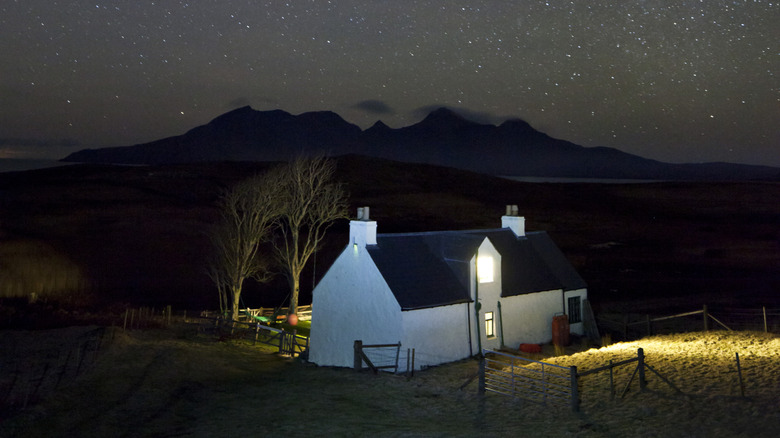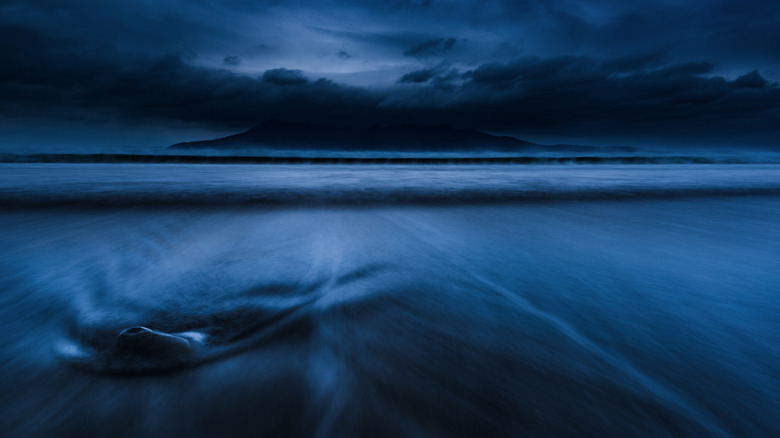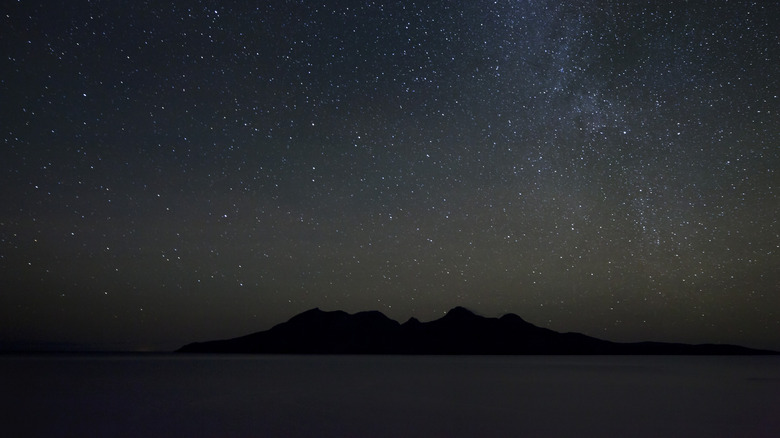A Gorgeous Island In The Inner Hebrides Has Become Scotland's First Dark Sky Destination
With the impending climate crisis these days, you'll hear almost daily about rising temperatures, natural disasters, and changes to the world's ecosystem. But the effects of light pollution are rarely spoken about. In fact, globalization and urbanization have stolen many a starlit night from us. In big cities it's become rare to see beyond the smog and overpowering illumination of nearby buildings, cars, and street lamps. The International Dark Sky Places sanctuaries were established as a response, to bring attention to this under-discussed issue, and to conserve the clearest night skies on the planet.
Europe so far has only two of these Dark Sky Sanctuaries on record. Ynys Enlli in Gwynedd, South Wales was granted the first award, for having one of the darkest night skies in the world. More recently, the panel of conservationists and scientific researchers has extended the award to Rum, the biggest of the small isles in the Hebrides. Scotland has been voted the most beautiful country in the world, and that includes the skies overhead, which are so untouched that it's said your eyes take 20 minutes to adapt to the dark.
Glimpse the milky way and the northern lights
Rum's tiny population of just 40 people accounts largely for its clear skies. The island is mainly a nature reserve, with no street lamps and barely any cars. It's permeated with bogs and rivers, with not much infrastructure or interference on the natural landscape. To reach the nearest doctor, you have to cross a body of water, and the local pub is on the neighboring island of Skye! Luckily the Rum Bunkhouse, a small community-run hostel that also offers camping, is open to starry-eyed visitors, and will more than likely have space for you as tourism is never high.
It may be difficult to get to (you'll need to take the Calmac ferry from Mallaig on the mainland), and moderately hard to navigate when there due to its lack of infrastructure and unlit roads, but a trip to Rum is absolutely worth the effort. On cloudless nights, the sky is replete with countless stars and you can catch a clear view of some planets, the Milky Way, and occasionally, you can even see the northern lights. Dark Sky Places aims to protect the status of Rum through public policy, education, and outreach and by passing dark sky-friendly legislation in the area. Their future plans include an observatory tower with telescopes at Kinloch in Rum and a year-long educational program where visitors can learn about astronomy and conservation, making the isle a prime location for stargazers and science buffs.
A paradise for astronomers and conservationists
Aside from offering some of the most unique night views in the world, DarkSky International aims to protect wildlife from the effects of light pollution. Rum is home to a wealth of wild animals including red deer, seals, white-tailed sea eagles, gannets, and otters. The Isle is also home to a quarter of the world's population of Manx shearwater fledglings who, as chicks, are vulnerable to the disorientation caused by light pollution. Mitigating light pollution by enforcing responsible lighting practices and advancing scientific research is not only conserving these species but also allowing them to thrive. Having the opportunity to see some of these rare species in the wild is also another great reason to visit Rum, and you may catch a glimpse of some of them around Kinloch Glen as you discover the Isle.
To make the most of the nights, it's recommended that you download a sky map app for stargazing, so you're able to distinguish between the constellations. The best time for stargazing is, of course, during the darkest months of the year, between October and March. Make sure to pack the right clothes to stay warm, because it can get windy on Rum, and don't forget a flask of tea as you're going to be in for long starry nights.


